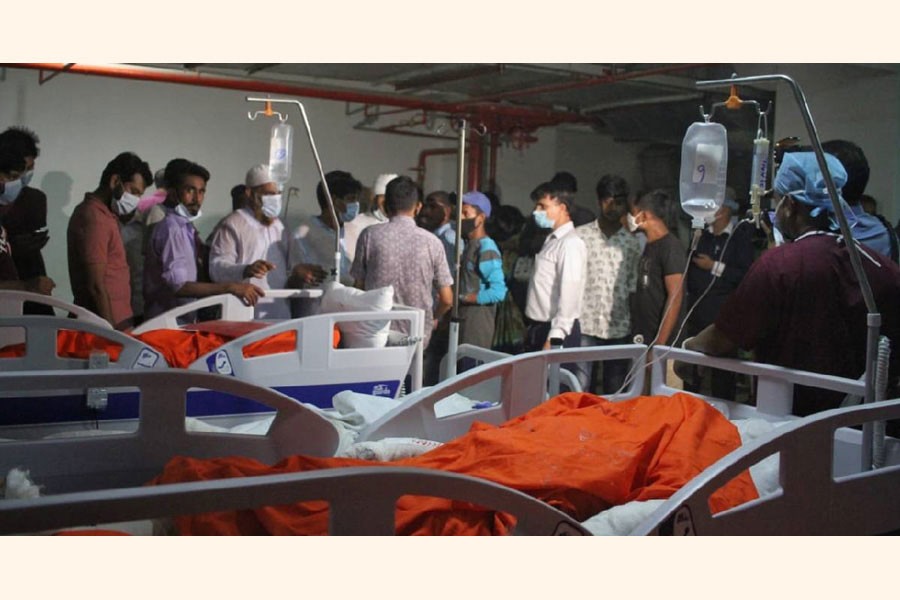The incidence of burn injuries is frighteningly high in Bangladesh. A considerable proportion of the population-- both adult and pediatric of both gender-- suffers from preventable burn injuries. According to one estimate burn injuries account for an estimated 265,000 deaths annually across the globe and 40 per cent of these burn injuries occur exclusively in South and Southeast Asia. In Bangladesh, more than 3000 people are die from burn injuries annually.
Millions of non-fatal burn cases often leave people with lifelong disabilities and disfigurements. Lack of access to appropriate and immediate medical care and the inability to subsequently integrate burn victims back into their communities creates an enormous burden for these victims and their family members. Progress has been made in high income countries to reduce the morbidity and mortality resulting from burn injuries, however, many of these advances in medical care and rehabilitation have not reached Bangladesh and most other low and middle income countries (LMIC) even though nearly 90 per cent of all burn injuries occur in LMICs.
Despite emerging and growing evidence on improved burn care management in high-income countries, few research studies in Bangladesh have been conducted to understand cause, type and severity of burns as well as on provisions of hospital care or assessment of treatment outcomes. Given the reality that burns are largely thought to be accidental in nature in Bangladesh, social awareness on burn prevention and adequacy of fire safety measures is quite low. Most cost-effective and practical interventions (e.g., fire extinguisher, smoke alarm etc.) implemented in high-income countries to reduce burn incidents have not reached most households in Bangladesh.
A recent research study led by the University of Texas Health Science Centre aimed to identify the characteristics of populations who have sustained severe burns and describe outcomes of burn victims who received care at Dhaka Medical College Hospital. The study findings suggest that the majority of victims were from low education and income group. Most had sixth-grade level education or below with monthly income of about 10,000 takas.
Burn injuries affected primarily working adult men. One third of all the injuries were sustained by women during activities involving cooking and meal preparation, and one third were sustained by children under age five.
Flame burns had the highest mortality rate and required long hospital stays. Over half of all flame burns occurred at home. Electrical burns were also found to be a large contributor to patient mortality. This study showed that two-thirds of all electrical injuries occurred outside home. Therefore, interventions should focus on fixing city infrastructure including powerline safety.
More severe injuries were common among adult males. The increased severity of burn injuries in men is possibly due to the predominance of occupation-related high voltage electrical burns. High voltage electrical burns can result in amputation, multi-organ damage or death.
More severe burns required longer healing times and resulted in complications such as sepsis and skin graft failure.
Typical Bangladeshi rural cooking includes boiling large quantities of rice and making curries in standing pots set on the floor which can easily spill on young children who are around. Therefore, interventions should focus on educating families about elevating cooking stoves, creating barriers surrounding the stoves, and keeping hot food out of reach of young children.
Barriers to receiving timely medical care include a lack of reliable transportation, under-developed roads and highway infrastructure, inadequate nearby healthcare resource as well as a lack of specialised burn centres in rural or other urban centres outside the capital city. The very high density of population, inadequate regulations and lapses in enforcement of the standards have worsened the situation.
This study highlighted the importance of having ongoing burn injury surveillance programmes in the country to understand the morbidity and mortality patterns and trends of burns, and to help develop and evaluate interventions. With improved burn injury surveillance, interventions can target specific risk factors and population groups.
Early acute medical management and long-term rehabilitation successes in the developed world enhanced life expectancy and improved quality of life after burn injury. Many of the long-term consequences suffered by the burn victims do not occur from the burn itself, but rather due to physical, social and economic barriers that exist in the society and workplace for the burn victims to reintegrate in the community or workplaces.
Fire safety has been greatly improved recently in the garment factories and other workplaces can learn from the adapted measures.
Bangladesh, with its very large population, has only one tertiary burn care centre in Dhaka. With the opening of the 500-ward hospital and Institute (Sheikh Hasina National Institute of Burn and Plastic Surgery), Bangladesh started its first serious and large-scale battle against this major public health threat in 2018. In addition to providing clinical care and management of burn victims, this Institute should become the leading provider of higher training and education on burn treatment for the health professionals. It should also lead social awareness campaigns that burns are preventable and demonstrate the ways for it for the general population.


